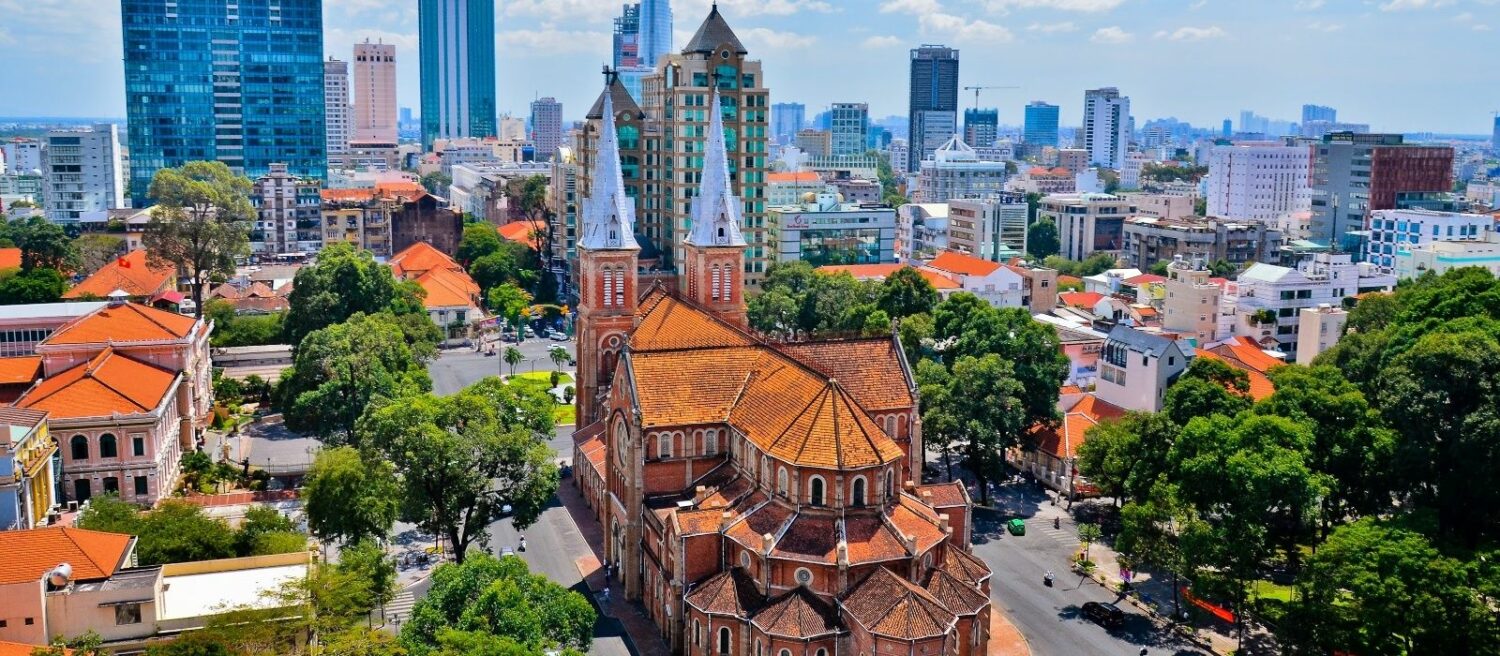By Hamlin Lovell, Nordic Investor
What lies behind the vertical stockmarket?
For Asian equities in general, the first quarter of 2018 was pretty lacklustre, with the MSCI Asia Pacific Index down just over half a percent, and performances of major markets ranging from up 2.5% for the Hang Seng China Enterprises Index, to down 6.8% for the Philippines’ PCOMP.
Economic growth of 6.8% in 2017 was some of the highest in Asia, and the momentum shows no signs of abating. First quarter 2018 growth ticked up to 7.4%.
The long, thin country of Vietnam was head and shoulders above the rest – with a gain of 19.3% propelling the VN Index to another all-time high. It has doubled over the past 18 months. I spent three weeks in Vietnam over Christmas 2017 and new year 2018, and found that there are many drivers behind the country’s strong economic and stock-market performance. Economic growth of 6.8% in 2017 was some of the highest in Asia, and the momentum shows no signs of abating. First quarter 2018 growth ticked up to 7.4%.
Urbanisation is one driver that has much further to go as half of the population work in agriculture, producing foodstuffs such as rice, fish, coffee, cashew nuts, and commodities like rubber.
Growth drivers
Tourism is growing spectacularly, with 13 million visitors in 2017: up almost 30% on the year before, but still falling far short of Thailand, where Bangkok alone gets more than 20 million visitors a year. Vietnam appeals to cultural, historical and religious tourists, as well as those seeking a seaside holiday or a river-based itinerary in the Mekong delta. DaNang and Nha Trang have miles and miles of sandy beaches, where thousands of hotels are being built – all only a three-hour flight from China. Local low-cost airline VietJet is listed on the stock-market, and is much faster – if less picturesque – than the country’s train network, which can take about 30 hours from Hanoi at the top to Ho Chi Minh City at the bottom.
Urbanisation is one driver that has much further to go as half of the population work in agriculture, producing foodstuffs such as rice, fish, coffee, cashew nuts, and commodities like rubber. As millions migrate to cities, productivity gains can drive growth as we saw in nineteenth century Europe.
Vietnam has nearly 1,700 listed companies and the number is growing all the time. Privatisation is expanding the investment universe. As a child in 1980s Britain, my first investments were UK privatisations of utilities. This was easy money as the stocks shot up on day one and carried on appreciating. Having been bloated bureaucracies for decades, it was simple for the companies to cut out costs and streamline their operations. The same thing can happen in communist Vietnam, where over half of the economy is still State Owned Enterprises (SOEs).
The credit creation multiplier is also working its magic. Vietnam’s banks have been recapitalised, and the credit cycle is viewed as being much less advanced than in countries such as China, or Malaysia.
Vietnam seems to have the “Goldilocks” sweet spot of economic growth that is not too hot, and not too cold. A lower risk-free rate naturally translates into higher equity valuations.
While US interest rates have been rising over the past year, in Vietnam the benchmark bond yield has fallen from over 6% to just over 4%, thanks in part to inflation being under control, below 3%. Vietnam seems to have the “Goldilocks” sweet spot of economic growth that is not too hot, and not too cold. A lower risk-free rate naturally translates into higher equity valuations.
Foreign Direct Investment (FDI) is breaking records, with $21 billion seen in 2017. This is partly because labour costs are competitive.
Investment vehicles
Vietnam is not the easiest market for foreigners to invest directly into, partly as many stocks have Foreign Ownership Limits. Two options are Exchange Traded Funds (ETFs) and Closed End Funds (CEFs).
ETFs include the US-listed VanEck Vectors Vietnam ETF (ticker VNM:US), which tracks MVIS Investible Indices’ MVIS Vietnam index, which contains 26 companies that generate at least 50% of their revenues from Vietnam. Some 19 of them are also incorporated in Vietnam, with the other 7 incorporated in South Korea, Taiwan, Japan, United Kingdom and the Cayman Islands.
In Europe, there is Deutsche Asset Management’s db x-trackers FTSE Vietnam UCITS ETF (ticker XFVT:GR), which tracks a different index: the FTSE Vietnam Index, which contains 22 large cap companies. Just two of them – Vietnam Dairy Products JSC (otherwise known as Vinamilk), and Vingroup JSC, make up nearly 30% of the index.
Investors who want more exposure to small and mid-cap stocks in Vietnam (and some unlisted assets) could explore three CEFs listed on the London Stock Exchange: Vietnam Enterprise Investments (ticker VEIL:LSE), run by Dragon Capital, VinaCapital Vietnam Opportunity Fund (ticker VOF:LSE), and VietNam Holding Limited (ticker VNH:LSE).
clearly Vietnam is about growth investing, not income investing.
On April 26th, the largest, VEIL traded at a 19% discount to NAV. It has existed since 1995 and invests in both publicly listed companies (including some that are already at or above their foreign ownership limits), and pre-IPO private equity. According to its weekly report, VEIL’s portfolio trades on 15.72 times forecast 2018 earnings, which are expected to grow by 25.69%. This is far greater than the earnings growth on offer from most developed market equities. The average dividend yield of 1.6% is not huge, but clearly Vietnam is about growth investing, not income investing. Banks and real estate are the largest sector weights in VEIL. VEIL’s market capitalisation is just over GBP 1 billion.
VOF is a similar sized vehicle with market capitalisation of GBP 700 million. It also trades on a virtually identical discount of 19%. It has unlisted equity, private equity and real estate as well as publicly listed equity. The sector breakdown is different with construction materials and food and beverage being the largest weights.
The smallest of the three is VOH, which has a market cap around $200 million (GBP 140 million) and has recently traded at a tighter discount of around 10% to NAV. VNH is distinguished by a focus on mid-cap stocks and includes ESG in its investment process. Most of its top ten holdings, listed on the monthly newsletter, are different from the index, with the largest being Phu Nhuan Jewelry. The manager is starting to get cautious on large cap valuations in Vietnam, pointing out that the VN-Index now trades on a trailing PE ratio of 21, whereas VOH positions are cheaper.
Investors who want broader exposure to frontier markets could consider a frontier markets tracker, which will still provide significant exposure to Vietnam. Vietnam makes up around 18% of the MSCI Frontier Markets 100 Index, for instance. The iShares MSCI Frontier 100 ETF (ticker FM:US) tracks this index.





